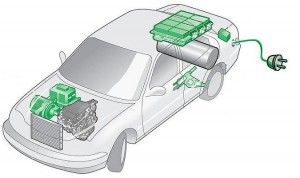MONDAY, 12 SEPTEMBER 2011
 Researchers at the Oak Ridge National Laboratory have identified that titanium dioxide (TiO2) electrodes can offer a superior alternative to the current graphite-based systems which are currently employed.
Researchers at the Oak Ridge National Laboratory have identified that titanium dioxide (TiO2) electrodes can offer a superior alternative to the current graphite-based systems which are currently employed.The researchers claim that their batteries can be charged to 50% of full capacity in just 6 minutes which is five times faster than traditional graphite-based lithium ion batteries. The results could have an impact in high power applications including hybrid electric vehicles [1].
Compared to traditional batteries the new material offers a higher capacity and a better control for state of charge as well as the safety and longevity associated with oxide materials. The superior performance of TiO2 batteries is due to channels and pores in the structure that allow for unimpeded flow of ions with a capacitor-like mechanism, which means that TiO2 electrodes can both charge and discharge more quickly.
The crucial barrier that remains before this technology can be implemented is to prove that the production process is scalable as synthesizing these materials is a long, multi-step process.
Written by Richard Thomson
